
Cumberland County is a county located in the U.S. state of North Carolina. As of the 2020 census, the population was 334,728, making it the fifth-most populous county in North Carolina. Its county seat is Fayetteville. Cumberland County is part of the Fayetteville, NC Metropolitan Statistical Area.
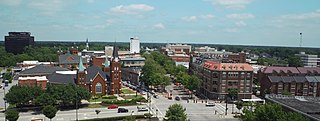
Fayetteville is a city in and the county seat of Cumberland County, North Carolina, United States. It is best known as the home of Fort Liberty, a major U.S. Army installation northwest of the city.

Hope Mills is a town in Cumberland County, North Carolina, United States. Its population was 15,176 at the 2010 census.
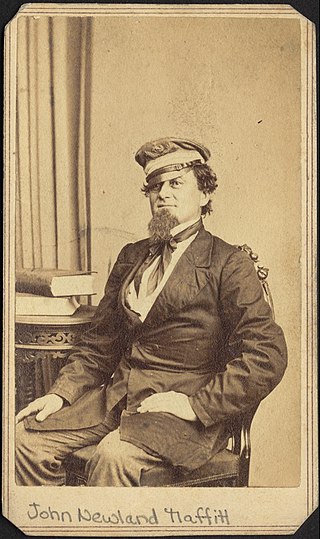
John Newland Maffitt was an officer in the Confederate States Navy who was nicknamed the "Prince of Privateers" due to his success as a blockade runner and commerce raider in the U.S. Civil War.

CSSOwl was a blockade runner in the Confederate States Navy during the American Civil War. It was built by Jones Quiggen, a ship builder in Liverpool, England and launched on June 21, 1864.
The Battle of Averasborough or the Battle of Averasboro, fought March 16, 1865, in Harnett and Cumberland counties, North Carolina, as part of the Carolinas Campaign of the American Civil War, was a prelude to the climactic Battle of Bentonville, which began three days later.

The Battle of Wilmington was fought February 11–22, 1865, during the American Civil War, mostly outside the city of Wilmington, North Carolina, between the opposing Union and Confederate Departments of North Carolina. The Union victory in January in the Second Battle of Fort Fisher meant that Wilmington, 30 miles upriver, could no longer be used by the Confederacy as a port. It fell to Union troops after they overcame Confederate defenses along the Cape Fear River south of the city. The Confederate General Braxton Bragg burned stores of tobacco and cotton, among other supplies and equipment, before leaving the city, to prevent the Union from seizing them.

Fort Fisher was a Confederate fort during the American Civil War. It protected the vital trading routes of the port at Wilmington, North Carolina, from 1861 until its capture by the Union in 1865. The fort was located on one of Cape Fear River's two outlets to the Atlantic Ocean on what was then known as Federal Point or Confederate Point and today is known as Pleasure Island. The strength of Fort Fisher led to its being called the Southern Gibraltar and the "Malakoff Tower of the South". The battle of Fort Fisher was the most decisive battle of the Civil War fought in North Carolina.
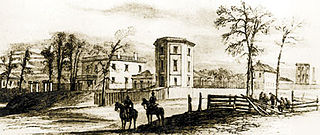
The Fayetteville Arsenal in Fayetteville, North Carolina was built in 1838 because during the War of 1812 the United States government realized that the existing distribution of weapons and ammunition factories was not adequate for the defense of the country. A program was begun to provide more Federal arsenals which would be distributed so that no area of the country would be too far away from an arms depot. Bladen County Representative James McKay introduced House Resolution #374 for inclusion of an arsenal at Fayetteville.
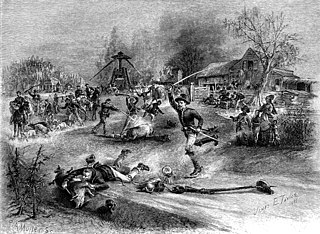
Bummers was a nickname applied to foragers of Maj. Gen. William Tecumseh Sherman's Union army during its March to the Sea and north through South Carolina and North Carolina during the American Civil War.
The Battle of Monroe's Crossroads took place during the Carolinas Campaign of the American Civil War in Cumberland County, North Carolina, on the grounds of the present day Fort Liberty Military Reservation. Involving about 4,500 men, it pitted mounted Confederate cavalry against dismounted Union cavalry. It was one of the last all-cavalry battles of the Civil War. The inconclusive fighting lasted for several hours early on the morning of March 10, 1865. The Confederate attack delayed the United States cavalry's movement toward Fayetteville, denying Brevet Maj. Gen. Hugh Judson Kilpatrick the honor of entering the town first.
The Museum of the Cape Fear Historical Complex is a museum about the history and cultural heritage of southern North Carolina. Opened in 1988 and located in Fayetteville, the museum is a regional branch of the North Carolina Museum of History in Raleigh. The complex includes the main history museum, the 1897 Poe House, and Arsenal Park.

Fort Anderson is a mid-19th-century earthen fort in the lower Cape Fear Region of North Carolina, located over the ruins of the colonial town of Brunswick in Brunswick County. It was built as a Confederate Fort by major general Samuel Gibbs French during the American Civil War. The fort was pivotal in protecting the Cape Fear River inlets and Wilmington upstream. Earthen batteries comprise the fort and were used as platforms and shields for the Confederate cannons. Beneath some of the earthworks were "bombproofs," shelters used by troops during enemy bombardment. The Confederacy decided to build forts around the Cape Fear River to protect the port of Wilmington from the Union blockade. During the Civil War, blockade runners brought supplies such as iron, guns, and ammunition to the Confederacy. The purpose of the fort was to hinder movement of Union ships, and to serve as a dropping off point for blockade runners fortunate enough to make it up the mouth of the Cape Fear River. Fort Anderson was built on the ruins of Brunswick Town and was originally named Fort St. Philip, after the ruins of the Revolutionary period church nearby. The name was changed to honor Col. George B. Anderson.

Heritage Square is a place in Fayetteville, North Carolina. Owned and maintained by The Woman's Club of Fayetteville, Heritage Square includes the Sandford House, built in 1797; the Oval Ballroom, a freestanding single room built in 1818; and the Baker-Haigh-Nimocks House, constructed in 1804. The buildings located on Heritage Square are listed in the National Register of Historic Places as the "Fayetteville Woman's Club and Oval Ballroom" and "Nimocks House."
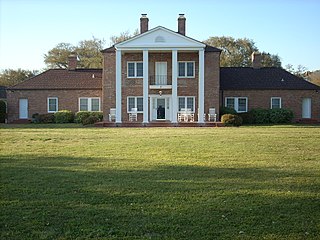
Fort Johnston was a British fort, later a United States Army post, in Brunswick County, North Carolina on Moore Street near Southport, North Carolina. It stands on the west bank of the Cape Fear River, four miles above its mouth.

Cross Creek Cemetery is a cemetery located in Fayetteville, North Carolina, near a creek of that name that "meanders for more than a mile from downtown Fayetteville to the Cape Fear River." It was established in 1785. The cemetery is organized into five numbered sections and is managed by a cemetery office within Fayetteville–Cumberland County Parks & Recreation.

During the American Civil War, blockade runners were used to get supplies through the Union blockade of the Confederate States of America that extended some 3,500 miles (5,600 km) along the Atlantic and Gulf of Mexico coastlines and the lower Mississippi River. The Confederacy had little industrial capability and could not produce the quantity of arms and other supplies needed to fight against the Union. To meet this need, British investors financed numerous blockade runners that were constructed in the British Isles and were used to import the guns, ordnance and other supplies, in exchange for cotton that the British textile industry needed greatly. To penetrate the blockade, these relatively lightweight shallow draft ships, mostly built in British shipyards and specially designed for speed, but not suited for transporting large quantities of cotton, had to cruise undetected, usually at night, through the Union blockade. The typical blockade runners were privately owned vessels often operating with a letter of marque issued by the Confederate government. If spotted, the blockade runners would attempt to outmaneuver or simply outrun any Union Navy warships on blockade patrol, often successfully.
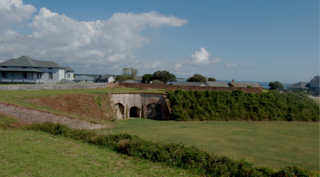
Located in North Carolina on the Atlantic Coast, the Fort Caswell Historic District encompasses 2 sites, 43 buildings, and 23 structures; it was added to the National Register of Historic Places in 2013. The fort itself was occupied by various branches of the U.S. armed forces for most of the period between 1836 and 1945 and is now a part of the North Carolina Baptist Assembly, a Christian retreat, owned and operated by the Baptist State Convention of North Carolina. It is accessible by the public to a limited extent per the conditions set forth by the Assembly’s Director.
Jane Evans Elliot, born Jane Smith Evans (1820–1886), was a diarist during the American Civil War who lived on the Ellerslie Plantation outside of Fayetteville, North Carolina. Her writings focus on "the many changes of girl hood, and maiden hood" before, during, and after the Civil War.
The following is a timeline of the history of the city of Fayetteville, North Carolina, USA.


















